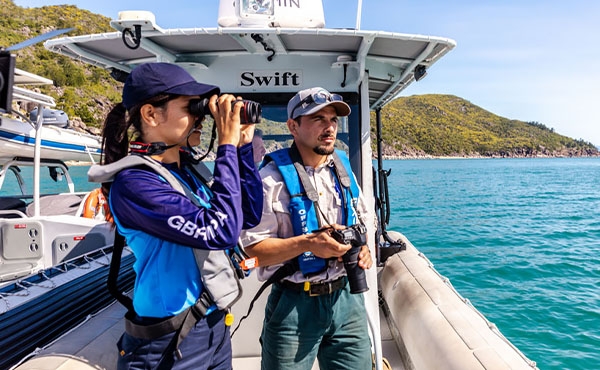Land-based runoff, particularly from agricultural land uses, has long been identified as a major contributor to poor ecosystem condition in the Reef.2,4,1098,1988 With the Reef’s combined catchments covering approximately 424,000 square kilometres, management of land-based runoff is highly complex and requires cooperation and integration among diverse management agencies.
Management of land-based runoff requires actors at all scales, from intergovernmental bodies and national governments to individual landowners, to engage and enact programs on their lands. Effective joint management arrangements are in place between Australian and Queensland governments through the Reef 2050 Plan, including the underlying Reef 2050 Water Quality Improvement Plan 2017–2022,1825 which directly addresses improving water quality to conserve Reef ecosystems. The managing agencies, industry and the community, use the Water Quality Improvement Plan to guide their collaborative efforts to improve the quality of water flowing to the Reef.
Planning systems for land-based runoff have continued to expand since 2019. These include the introduction of the strengthened Reef Protection Regulations (Qld) and setting end-of-basin load water quality objectives (Reef Water Quality Objectives) for all Reef catchments. The Reef Protection regulations were made in close consultation with key stakeholders including the agricultural sector, industrial stakeholders, local councils, conservation groups, natural resource management (NRM) bodies, individual producers and the public. The regulations require landowners to achieve minimum standards for practices on grazing land and banana and sugarcane farms to minimise fine sediment and nutrient discharges to water that flows to the Reef. The regulations were rolled out over a five-year period based on water quality priorities and to allow agricultural industry time to adapt to the new requirements. This staged approach, while necessary, means that programs are still in their infancy and efficacy is currently hard to measure. Despite an extensive consultation process there remains a degree of dissatisfaction among the agricultural sectors. This may be because efforts focused on consultation and knowledge sharing, compared with more involved engagement efforts to collaborate with and empower farmers. Additional efforts may be worthwhile.
Despite their unpopularity,11 these regulations are considered to provide a sophisticated and scientific approach to managing agricultural runoff and complement existing voluntary programs and market-based measures.1989 The Reef Water Quality Objectives provide clear baselines for end of catchment levels of anthropogenic dissolved inorganic nitrogen and anthropogenic fine sediments for all the major natural resource management regions within the Catchment. However, these minimum standards are insufficient on their own to reach stated water quality targets.1990


